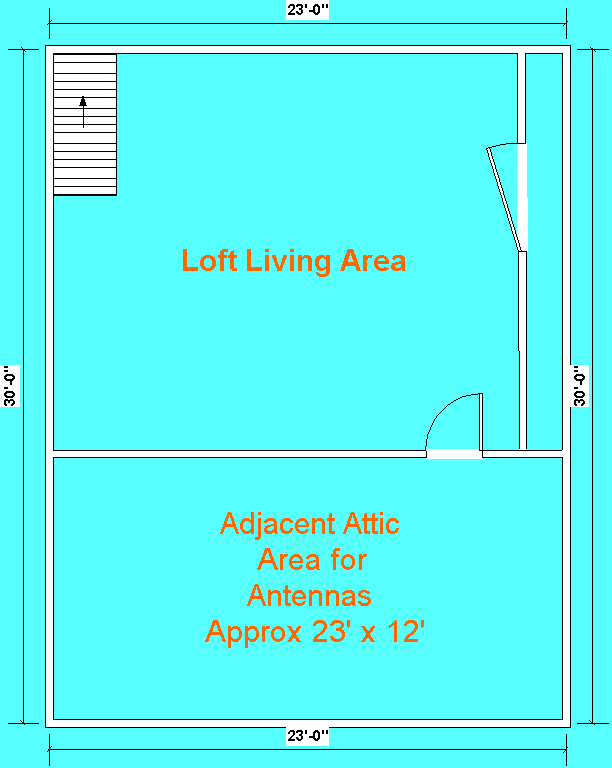While I lived in Exton, PA my home was in a townhouse community with very restrictive covenants on owner changes
to the exterior of the properties. We had a very active group of self-styled community watch dogs that regularly inspect the neighborhood. Infractions would quickly get you a formal letter of violation. External antennas of any form
(except direct broadcast satellite TV, of course) are forbidden.
My townhouse was an interior unit in a building of 5 units. It had both a finished basement and finished 3rd floor loft. These spaces provided both benefit and curse. My shack was located in the basement to avoid the problems
of elevated grounds and RF in the shack in the finished loft(approximately 30 feet above ground).
However using the loft for antennas and the basement for the shack posed its own set of problems.
- How to route coax cables 3 floors to the basement?
- What antennas to use and where to locate them when most of my “attic” was finished living space?
Fortunately, the arrangement of my loft room provided unused space under the roofline adjacent to the room wall (see diagram). An understanding XYL and the need for some additional storage space made it possible for me to add an access
door from the loft to this space. BTW, when I sold the property and the access door was seen as a
positive for more storage space. Care was taken to insulate this door, as it is a direct access to unfinished space.

Once into the space I discovered foil-backed rigid insulation had been used against the loft wall. This was removed and Owens Corning rigid foam insulation was installed improving the R factor. Accessing this space has had an
added benefit. By using a simple freestanding fan I have easily ventilated this south-facing space lowering the summer temperatures of the adjacent room and bedroom below.
Below are links to individual pages:
In summary I developed a reasonable compromise for ham operations in an antenna restricted community.
I hesitate to consider advantages and disadvantages since it implies alternatives for attic antennas. Of course, if outside antennas are available they should always be the first choice. However, the antennas described on these pages do address several issues including:
- Full compliance with restrictive outside antenna covenants (except 80 meter)
- Maximum height-above-ground for best horizontal antenna performance
- Instant band switching
- Maximum bands per cubic foot
- Attic space remains usable storage space (avoid metallic objects)
But the limitations include:
- High powers will probably cause unacceptable interference
- Fixed (and some what unknown) antenna patterns
- Increased local RF noise
All in all an excellent compromise.
If you are faced with similar limitations use some creativity and go for it.
73 and look for me on the bands
I am always interested in the experiences of other antenna restricted hams or helping solve similar problems. I am neither a lawyer nor marriage counselor so please stick with the technical issues. You can e-mail me at dave@kjellquist.com
